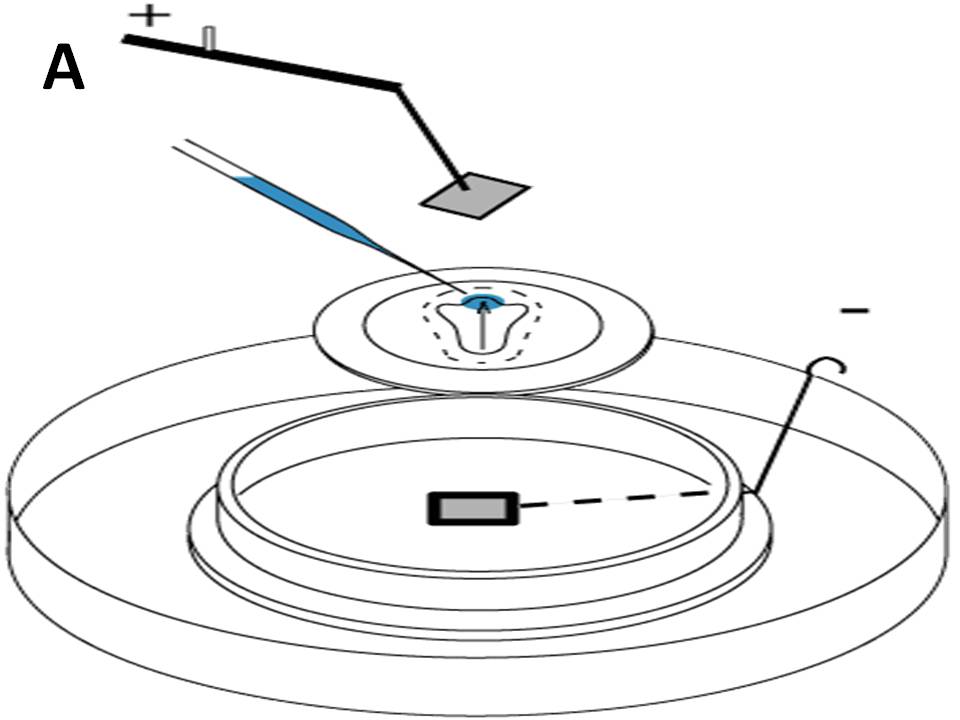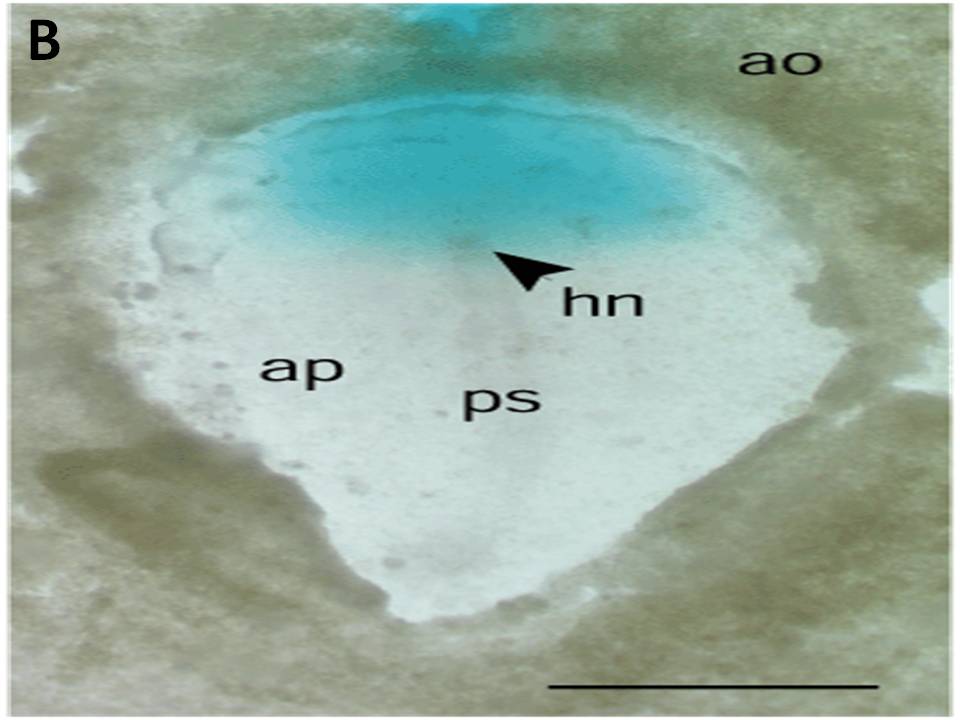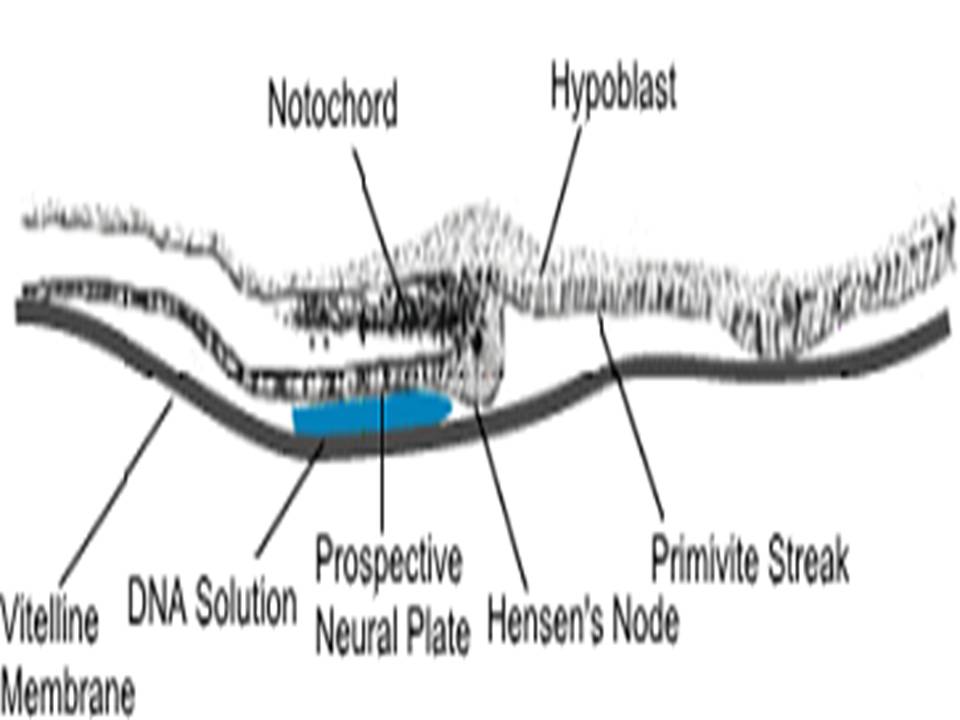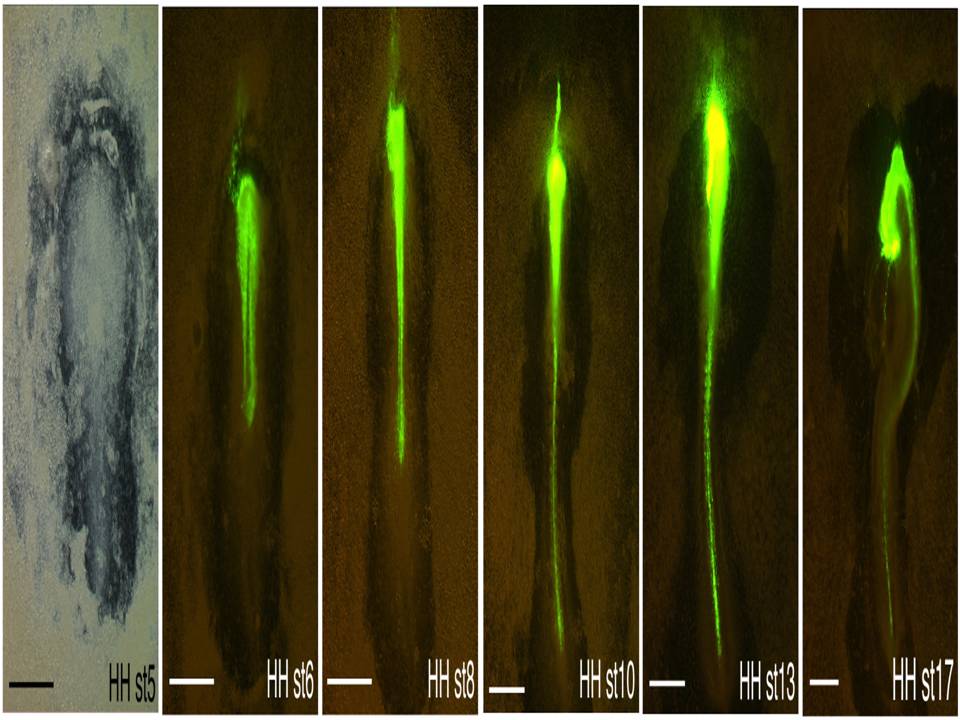Chick embryo Electroporation using News culture gastrula
Chick embryo Electroporation using News culture (gastrula)
NEPA21 / CUY21 Applications |
|
[Chick Embryo] Electroporation of early chick embryos using New’s culture (gastrula). |
|
||||
|
A: Schema illustrating the system
B: Hamburger and Hamilton (HH) stage 4 chick embryo with DNA solution injected to the prospective neural plate region. DNA solution was colored with a FastGreen dye. hn: Hensen’s node, ps: primitive streak, ao: area opaca, ap: area pellucid
C: Schema illustrating the location of DNA solution between the vitelline membrane and the ectoderm.
|
||||
| .
Experimental Procedure 1. Dissect an embryo using a paper ring (dried filter paper) out of the egg.
2. Rinse gently to remove excess yolk, and place the embryo onto the platform of the cathode chamber.
3. Inject DNA solution into the space between the ectoderm and vitelline membrane using a glass pipette (for introduction to the ectoderm derivatives).
4. Adjust the target site right onto the cathode, and set the anode above it. Set the electrode distance at 5mm.
5. Deliver electric pulses (10V, pulse on 50ms, pulse of 100ms, 5 pulses) using a CUY21 electroporator.
6. Place the specimen on an agarose-albumin plate, and incubate at 39°C. . |
||||
|
GFP expression becomes detectable by HH6 (about 5 hours after electroporation) in the neural plate, which spreads throughout the central nervous system at HH17. Scale bar: 1mm. .
|
||||
|
Transgene expression after the electroporation GFP gene was introduced to the prospective neural plate at HH4, and the embryo was cultured for about 34 hours (HH17 equivalent). GFP expression was occasionally monitored under a fluorescent dissecting microscope. GFP fluorescence was detectable as early as 3 hours after electroporation at the central nervous system and head ectoderm. More than 80% of cells within the transfected area express GFP. . |
||||
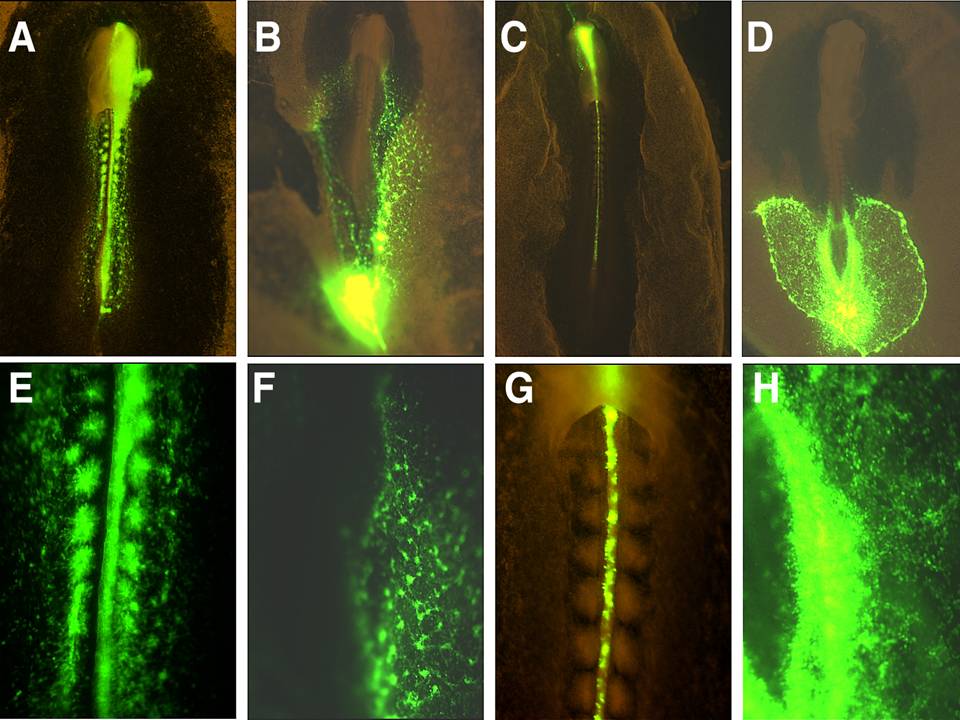 |
Gene transfection for tissues other than the CNS Based on the fate map of the chick epiblast, transgenes can be introduced to the somites (A, E), hematopoietic system (B, F), notochord (C, G), or lateral plate mesoderm (D, H).
E-H are the high power views of A-D, respectively. |
|||
|
Division of Morphogenesis, Institute of Molecular Embryology and Genetics, Kumamoto University; Kenji Shimamura |
||||
| Contact Us for more Information
. |
||||

